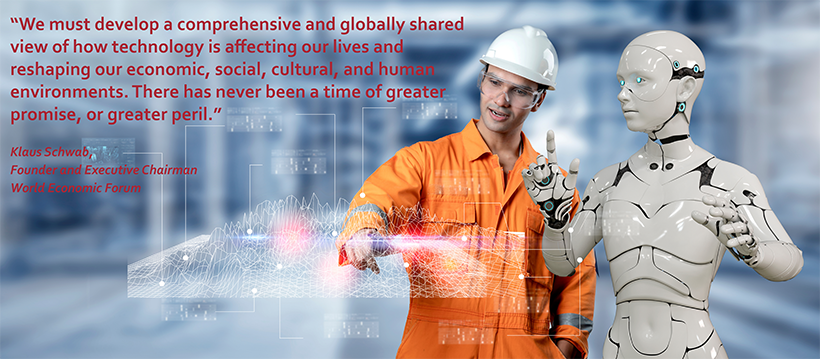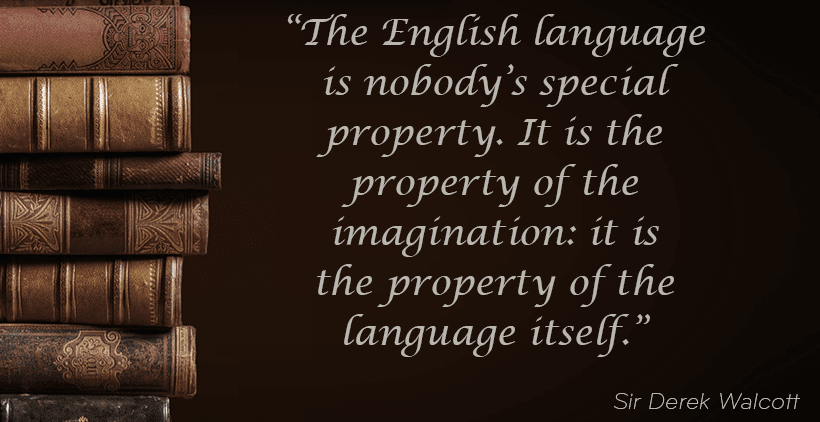Maintenance and technology:
Asset Management in the 21st Century
This post is one in a series regarding the intersection of maintenance and emerging technologies. We'll look at some key innovations changing the face of maintenance activities and the benefits they bring to asset management.
Technology's relentless advance requires our adjustment to a new lexicon, a strange dictionary of words and phrases that emerge into our everyday communications with little explanation. Industry 4.0 is an example, a phrase ubiquitous in articles on manufacturing, distribution, or maintenance, yet we struggle when challenged to define it. In this series of articles, we'll be looking at a range of technologies revolutionising maintenance, but before we dive into those, we should understand the conceptual foundation upon which they stand.
“Technology is
best when it
brings people
together.”
–Matt Mullenweg
>
Industry 4.0's genesis
Industry 4.0 is shorthand to describe the fourth industrial revolution, a phrase coined by a group of German scientists engaged in developing a high-technology strategy for their Government. The World Economic Forum then launched the phrase into our consciousness as a theme for the 2016 World Economic Forum Annual Meeting in Switzerland.
The term Industry 4.0 extrapolates from the original industrial revolution during the late 18th and early 19th centuries, which heralded new manufacturing processes. This time was an inflexion point in history, altering people's lives, increasing average incomes, and boosting the world's population as our standard of living consistently improved.
Hover Your Mouse Over The Graphic Below For More Detail
Technological advance
The second industrial revolution occurred in the late 19th and early 20th centuries and was known as the technological revolution. This period introduced scientific manufacturing methods, including mass production and standardisation. Known for the development of the machine tool industry and the Bessemer process that cheaply mass-produced steel, the second industrial revolution saw huge advances in the spread of utilities, like water, gas, and sewage systems, and public transport, which supported the spread of people across the globe.
Digitalisation
The digital revolution that began post World War II is the third industrial revolution, heralding the shift from mechanical and analogue electronics to digital and beginning the move into the information age. The mass production of integrated circuits and digital logic gave us cell phones, computers, and the internet, enabling always-on, real-time communication and fast-tracking globalisation by enabling outsourcing.
Advance of the algorithm
The world now allegedly finds itself amid the fourth industrial revolution, although some debate the fact. Wherever one sits on the issue, there is no argument that we are in an era characterised by data exchange and automation. Industry 4.0 is a term that refers to industrial technologies and processes that increase operational efficiency through using interconnection and decentralised decision-making to perform complex or repetitive functions. Common technologies include artificial intelligence (AI), machine learning (ML), the industrial internet of things (IIoT), and cloud computing.
Human-centric development
While some are only now becoming aware of Industry 4.0, the European Commission (EC) is already promoting debate on Industry 5.0. It intends to shift the focus from shareholder value which is implicit in Industry 4.0, to stakeholder value and use technological innovation to benefit rather than threaten industry workers. It also aims to drive respect for social and planetary considerations. The EC wishes to see industrial technologies become human-centric and sustainable, reinforcing industry contribution to society while creating resilience1.
Onto the interesting bits...
So well done for getting through that dry but quick summary of the foundations and terminology underpinning emerging technologies, and in the coming articles, we'll do a more exciting dive into some of the established and emerging technologies that have transformed or are transforming the state of manufacturing generally and maintenance in particular.
1 European Commission, Directorate-General for Research and Innovation, Breque, M., De Nul, L., Petridis, A., Industry 5.0: towards a sustainable, human-centric and resilient European industry, Publications Office, 2021, https://data.europa.eu/doi/10.2777/308407


